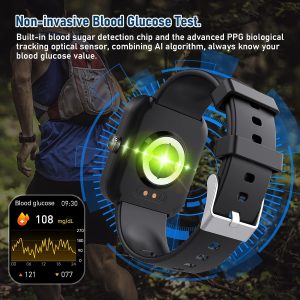Contents
- Understanding The Pco Cell Technology
- Benefits Of Using Pco Cell Air Purifiers
- Factors To Consider When Choosing A Pco Cell Air Purifier
- Step 1: Capturing Airborne Particles
- Step 2: Activating Pco Cell Technology
- Step 3: Decomposing Harmful Pollutants
- Comparing Pco Cell With Hepa Filters
- Comparing Pco Cell With Activated Carbon Filters
- Summary: Why Pco Cell Is The Ultimate Air Purification Solution
- Frequently Asked Questions For Pco Cell For Air Purifier
- Conclusion
The PCO cell in an air purifier effectively eliminates airborne pollutants by using a chemical reaction. This powerful feature makes it a valuable component for improving indoor air quality and promoting a healthier environment for you and your loved ones.
Nowadays, with the increasing concerns about air pollution and its impact on our health, many individuals are turning to air purifiers as a solution. These devices utilize various technologies to filter out harmful particles, such as dust, allergens, smoke, and even volatile organic compounds (VOCs).
One such technology is the PCO cell, which stands for Photocatalytic Oxidation. PCO cells work by employing a titanium dioxide (TiO2) catalyst along with ultraviolet (UV) light. When the UV light interacts with the catalyst, a chemical reaction takes place, creating hydroxyl radicals and superoxide ions. These active species then attack and break down pollutants into harmless substances like carbon dioxide and water vapor. This powerful process effectively neutralizes a wide range of indoor air pollutants, making the PCO cell an invaluable feature of air purifiers. By incorporating this technology into your air purification system, you can enjoy cleaner, fresher air while reducing the risks associated with poor indoor air quality.
Understanding The Pco Cell Technology
The Pco Cell Technology is a revolutionary solution for air purifiers. It effectively removes harmful pollutants and improves indoor air quality, making it a valuable addition to any home or office space. You can trust the Pco Cell to provide clean and fresh air for a healthier environment.
What Is A Pco Cell?
A Pco Cell, or Photocatalytic Oxidation Cell, is a specialized technology used in air purifiers to effectively remove harmful pollutants from the air. It is an advanced filtration system that combines photocatalysis and oxidation to break down pollutants at a molecular level.
Here are the key features of a Pco Cell:
- Utilizes a photocatalyst: The Pco Cell contains a photocatalyst, typically made from titanium dioxide, which is activated by ultraviolet (UV) light.
- Generates reactive oxygen species (ROS): When the UV light interacts with the photocatalyst, it triggers a reaction that creates ROS, such as hydroxyl radicals and superoxide ions.
- Destroys pollutants: The generated ROS have powerful oxidative properties and can effectively destroy a wide range of indoor air pollutants, including volatile organic compounds (VOCs), bacteria, viruses, mold, and allergens.
- Works continuously: Unlike traditional air purifiers that merely trap pollutants, a Pco Cell actively neutralizes and eliminates them, ensuring uninterrupted purification.
How Does Pco Cell Work?
The Pco Cell technology follows a multi-step process to purify the air efficiently. Here’s a breakdown of how it works:
- UV light activation: When the air passes through the Pco Cell, the built-in UV light activates the photocatalyst coated on its surface.
- Photocatalysis: The activated photocatalyst initiates a chemical reaction that converts water vapor into hydroxyl radicals and superoxide ions.
- Oxidation reaction: The hydroxyl radicals and superoxide ions produced in the previous step come into contact with airborne pollutants, such as VOCs, bacteria, and mold spores.
- Breakdown of pollutants: Through oxidative reactions, the hydroxyl radicals and superoxide ions break down the molecular structure of the pollutants, rendering them harmless.
- Removal of by-products: The by-products of the oxidation process, which are usually carbon dioxide and water, are released back into the air.
- Continuous purification: The Pco Cell keeps functioning as long as there is UV light present, ensuring consistent air purification.
The role of Pco Cell in air purification:
- Efficient removal of VOCs: Volatile organic compounds, commonly found in cleaning products, paints, and furniture, can contribute to indoor air pollution. Pco Cells have the ability to effectively neutralize and eliminate VOCs, improving indoor air quality.
- Elimination of bacteria and viruses: Pco Cell technology is highly effective in destroying harmful microorganisms like bacteria and viruses that can cause illnesses. It acts as an additional layer of protection against airborne pathogens.
- Reduction of mold and allergens: Mold spores and allergens present in the air can trigger respiratory problems and allergies. Pco Cells help in breaking down mold spores and reducing allergens, providing relief to individuals with sensitivities.
- Odor control: Pco Cell technology also helps in controlling unpleasant odors caused by cooking, pets, and other sources. It neutralizes the odor-causing molecules, leaving the air fresh and clean.
Pco Cell technology offers a comprehensive solution to indoor air pollution by efficiently neutralizing and eliminating various pollutants. By incorporating this advanced technology, air purifiers can provide healthier and cleaner air for improved well-being.
Benefits Of Using Pco Cell Air Purifiers
Pco Cell Air Purifiers offer numerous benefits for a fresher and cleaner indoor environment. They effectively eliminate harmful contaminants and odors, promoting better respiratory health and reducing allergies.
Achieving Pure And Fresh Air
Are you tired of breathing in stale and polluted air? Look no further than the innovative Pco Cell air purifiers! These amazing devices use advanced technology to effectively clean the air in your surroundings, providing you with a constant supply of pure and fresh air.
Here are some key benefits of using Pco Cell air purifiers:
- Effective air purification: Pco Cell air purifiers utilize a powerful combination of photocatalytic oxidation (PCO) and activated carbon filters to capture and eliminate a wide range of airborne particles including dust, pollen, pet dander, mold spores, and even bacteria and viruses. This ensures that the air you breathe is free from harmful pollutants, allergens, and irritants.
- Odor elimination: Pco Cell air purifiers go beyond just removing airborne particles; they also effectively eliminate unpleasant odors from your indoor spaces. Whether it’s cooking smells, pet odors, or musty odors from mold and mildew, the PCO technology breaks down the odor molecules, leaving your home smelling fresh and clean.
- Reduced risk of respiratory diseases: Indoor air pollution is a major concern, particularly for individuals with respiratory conditions such as asthma or allergies. By using Pco Cell air purifiers, you can significantly reduce the risk of respiratory diseases by removing airborne triggers and irritants that can exacerbate these conditions. Enjoy cleaner and healthier air, promoting better respiratory health for you and your loved ones.
- Quiet and efficient operation: Pco Cell air purifiers are designed to operate quietly, so you can enjoy clean air without any disruptive noise. They are also energy-efficient, consuming minimal power while delivering maximum performance. You can have peace of mind knowing that you’re not only breathing cleaner air but also helping the environment by reducing your energy consumption.
- Easy maintenance: Pco Cell air purifiers are user-friendly and require minimal maintenance. The filters are easily replaceable, and the devices typically come with convenient filter replacement indicators to remind you when it’s time for a change. This ensures that your air purifier continues to perform optimally, providing you with pure and fresh air for extended periods.
Experience the numerous benefits of using Pco Cell air purifiers and make a positive impact on the air quality in your home or office. Invest in this advanced technology to achieve a healthier living environment and enjoy the benefits of breathing pure and fresh air every day.
Say goodbye to indoor air pollution and hello to a breath of fresh air with Pco Cell!
Factors To Consider When Choosing A Pco Cell Air Purifier
Choosing a Pco Cell air purifier requires considering multiple factors to ensure the best performance. Factors include the size of the room, the type of pollutants you want to remove, the noise level, the maintenance required, and the cost of replacement filters.
When it comes to choosing a Pco Cell air purifier, there are several factors that you should consider. These factors will help you determine which air purifier is the right fit for your needs. Below, we have outlined the most important factors to keep in mind when making your decision:
Coverage Area:
- Consider the size of the room or area where you plan to use the air purifier.
- Look for an air purifier that has a coverage area suitable to effectively clean the air in your space.
- Choosing an air purifier with a coverage area too small for your room may not provide adequate purification.
- On the other hand, selecting an air purifier with a coverage area too large for your room may result in unnecessary energy consumption.
Filter Replacement:
- Check the filter replacement requirements of the Pco Cell air purifier you are considering.
- Some air purifiers require frequent filter replacements, while others have filters that last longer.
- Consider the cost and availability of replacement filters, as this will impact the long-term maintenance of your air purifier.
- Look for air purifiers with easily accessible filters, making the replacement process hassle-free.
Noise Level:
- Take into account the noise level of the air purifier.
- If you plan to use the air purifier in a living room, bedroom, or office, you may prefer a model with a low noise level.
- Consider your preferences and whether high noise levels would be bothersome in your intended area of use.
- Consult product specifications and customer reviews to get an idea of the noise level of the air purifier you are interested in.
When selecting a Pco Cell air purifier, it is essential to consider factors such as coverage area, filter replacement, and noise level. By taking these factors into account, you can choose an air purifier that effectively cleans the air in your space, is cost-effective in terms of filter replacement, and matches your preference for noise levels.
Remember to evaluate these aspects carefully to ensure you make the right choice for your needs.

Credit: www.amazon.com
Step 1: Capturing Airborne Particles
Our top-notch Pco Cell for Air Purifier is designed to effectively capture airborne particles, ensuring your indoor air is clean and pollution-free. With its advanced technology, it removes harmful contaminants, providing you with a healthier environment.
Pre-Filters And Their Role:
Air purifiers equipped with PCO (Photocatalytic Oxidation) cells are highly effective in purifying the air around you. Let’s dive into the first step of the PCO process: capturing airborne particles. Pre-filters play a crucial role in this step by trapping large particles before they reach the PCO cell.
Here’s everything you need to know:
- Pre-filters act as the first line of defense against airborne particles, preventing them from clogging the PCO cell and maximizing its efficiency.
- These filters are designed to capture larger particles like dust, pet dander, pollen, and hair, making the air cleaner and healthier to breathe.
- By removing larger particles, pre-filters contribute to preserving the lifespan of the PCO cell, ensuring that it can effectively tackle smaller pollutants.
- The pre-filter is typically made of a coarse material like foam or mesh, which allows easy passage for air while trapping particles.
- Regularly cleaning or replacing pre-filters is essential to maintain the air purifier’s overall effectiveness. This step prevents the accumulation of trapped particles and ensures optimal performance.
Now that you understand the role of pre-filters in capturing airborne particles, let’s move on to the next step: Photocatalytic Oxidation (PCO) in action.
Step 2: Activating Pco Cell Technology
Activate the Pco Cell technology in your air purifier to effectively eliminate harmful pollutants and allergens from your indoor environment. Breathe cleaner, fresher air with this advanced air purification solution.
Pco Cell technology plays a crucial role in the effectiveness of air purifiers. It utilizes UV-C light and the generation of hydroxyl radicals to target and neutralize harmful pollutants in the air. In this step, we will explore the activation process and understand how Pco Cell technology works to improve the air quality in your home.
Uv-C Light And Its Role
- UV-C light: This type of ultraviolet light is utilized by Pco Cell technology to initiate the photocatalytic process. It has a wavelength of 254 nanometers, which is known to effectively destroy contaminants such as bacteria, viruses, mold, and volatile organic compounds (VOCs).
- Activation: When the air purifier is turned on, UV-C light is emitted onto the Pco Cell surface. This activates the photocatalyst, consisting of metal compounds like titanium dioxide, on the surface of the Pco Cell.
- Photocatalysis: The activated Pco Cell triggers a chemical reaction, converting moisture in the air into hydroxyl radicals and superoxide ions. These powerful oxidizers are capable of breaking down harmful pollutants into harmless byproducts, like water vapor and carbon dioxide.
- Hydroxyl radicals: Hydroxyl radicals are the key component in the Pco Cell technology. They act as highly reactive molecules that attack and destroy airborne pollutants at the molecular level. By breaking down the structure of contaminants, hydroxyl radicals effectively render them harmless.
- Continuous process: Pco Cell technology continuously generates hydroxyl radicals as long as the air purifier is powered on. This ensures a continuous purification process, constantly reducing the presence of pollutants and improving the air quality in your home.
By activating Pco Cell technology through UV-C light, air purifiers effectively neutralize harmful contaminants in the air. This innovative process ensures that you and your family can breathe cleaner and healthier air indoors.
Step 3: Decomposing Harmful Pollutants
Step 3 of the air purification process involves decomposing harmful pollutants using a PCO cell. This innovative technology effectively neutralizes pollutants, ensuring cleaner and healthier indoor air.
In order to effectively purify the air in your living or working space, it is important to have a clear understanding of the process involved in decomposing harmful pollutants. By adopting the latest technology, PCO (Photocatalytic Oxidation) cells for air purifiers have revolutionized the way pollutants are treated.
With their powerful ability to break down volatile organic compounds (VOCs), these cells play a crucial role in ensuring the air we breathe is clean and free from contaminants.
Oxidation Process
The oxidation process is an integral part of PCO cell technology, enabling the decomposition of harmful pollutants. Here’s how it works:
- Photocatalytic Reaction: When UV light comes into contact with the PCO cell, it triggers a photocatalytic reaction. This reaction takes place on the surface of the cell, where a catalyst, usually titanium dioxide (TiO2) is present. This catalyst acts as a facilitator, accelerating the process of oxidation.
- Creation of Reactive Oxygen Species (ROS): As the UV light reacts with the catalyst, it energizes the electrons present in the titanium dioxide. These energized electrons then react with water molecules in the air, creating reactive oxygen species (ROS). These ROS, such as hydroxyl radicals and superoxide ions, are highly reactive in nature and have the ability to break down various pollutants.
- Decomposition of Pollutants: Once the reactive oxygen species are generated, they start oxidizing the harmful pollutants present in the air. This oxidation process breaks down volatile organic compounds (VOCs) into less harmful byproducts such as carbon dioxide and water vapor. VOCs are released by various sources such as cleaning products, paints, and even indoor furniture. By decomposing these VOCs, PCO cells effectively eliminate their potential negative health effects.
- Continuous Air Purification: PCO cells work continuously to decompose pollutants, ensuring a constant supply of clean air. As the air circulates through the air purifier, it passes through the PCO cell, where the oxidation process takes place. This continuous purification process helps maintain a healthy and pollutant-free indoor environment.
By leveraging the power of the oxidation process, PCO cells effectively decompose harmful pollutants in the air. With their ability to break down volatile organic compounds, these cells play a vital role in improving indoor air quality and promoting a healthier living or working space.
Comparing Pco Cell With Hepa Filters
Pco Cell is a powerful air purifier technology that effectively removes pollutants, allergens, and odors. When comparing it with HEPA filters, Pco Cell offers better air purification with its ability to break down and destroy contaminants at a molecular level, ensuring clean and fresh indoor air.
When it comes to choosing the right air purifier for your indoor space, it’s essential to consider the technology behind it. One popular option is a Pco Cell, which stands for Photocatalytic Oxidation Cell. But how does it fare against a well-known competitor, the HEPA filter?
Let’s delve into the efficiency of these two technologies and how they address different types of pollutants.
Efficiency In Removing Particles
HEPA Filters:
- HEPA filters are known for their high efficiency in trapping particles as small as 0.3 microns.
- They operate by using a dense network of fibers that capture microscopic airborne particles.
- HEPA filters can effectively remove allergens, dust, pollen, pet dander, and even some bacteria and viruses.
- These filters have an impressive efficiency rate of up to 99.97% in removing airborne particles.
Pco Cell:
- Pco Cells utilize photocatalytic oxidation to eliminate pollutants and unpleasant odors.
- They work by reacting with the UV light to create hydroxyl radicals and superoxide ions, which break down harmful substances.
- Pco Cells are effective in neutralizing volatile organic compounds (VOCs), such as formaldehyde and benzene, and reducing odors from smoke, cooking, and pets.
- However, Pco Cells may not be as efficient as HEPA filters in removing large particles like dust and allergens.
Addressing Different Types Of Pollutants
HEPA Filters:
- HEPA filters are exceptionally suitable for capturing allergens, dust mites, pollen, and mold spores.
- They can also trap pet dander, which is a common allergen for many individuals.
- HEPA filters can be especially beneficial for people suffering from allergies or asthma.
Pco Cell:
- Pco Cells excel at neutralizing volatile organic compounds (VOCs) emitted by household products, building materials, and air pollutants.
- They are particularly effective against formaldehyde, toluene, and other harmful chemicals.
- Pco Cells can help improve indoor air quality and create a more pleasant environment.
When choosing between a Pco Cell and a HEPA filter for your air purification needs, it’s important to consider the types of pollutants you want to address. If you are mainly concerned about capturing allergens, dust, and pollen, a HEPA filter might be the better option.
However, if your priority is reducing volatile organic compounds (VOCs) and odor elimination, a Pco Cell would be more suitable. Ultimately, understanding the specific needs of your indoor space will guide you in making the right decision.
Comparing Pco Cell With Activated Carbon Filters
Comparing the Pco Cell with activated carbon filters reveals their effectiveness as air purifiers. The Pco Cell technology utilizes UV light to destroy pollutants, while activated carbon filters trap odors and VOCs. Both options provide clean and fresh indoor air.
Capturing And Eliminating Odor
Pco Cell and activated carbon filters are both commonly used in air purifiers to tackle odor issues. However, they work in different ways to achieve this goal. Here, we’ll compare Pco Cell with Activated Carbon Filters in terms of odor elimination.
- Pco Cell:
- Utilizes a photocatalytic process to neutralize odors
- Releases hydroxyl radicals that break down odor molecules
- Effective in capturing and eliminating a wide range of odors
- Activated Carbon Filters:
- Absorb and trap odors within their porous structure
- Use a chemical attraction to pull in and retain odor molecules
- Particularly efficient in addressing odors caused by volatile organic compounds (VOCs)
Both Pco Cell and activated carbon filters are effective at capturing and eliminating odor. However, they differ in their approach and effectiveness against certain types of odors.
Addressing Specific Chemical Compounds
When it comes to addressing specific chemical compounds present in the air, Pco Cell and activated carbon filters have distinct advantages.
- Pco Cell:
- Effectively breaks down chemical compounds through the photocatalytic process
- Targets volatile organic compounds (VOCs), including formaldehyde, benzene, and other harmful substances
- Helps improve indoor air quality by neutralizing chemicals emitted from cleaning products, paints, and furniture
- Activated Carbon Filters:
- Efficiently adsorb a variety of chemical compounds, including gases, fumes, and volatile organic compounds (VOCs)
- Particularly effective against odors caused by tobacco smoke, cooking, and pet-related issues
- Reduces exposure to harmful chemicals and improves overall air quality
By addressing specific chemical compounds, both Pco Cell and activated carbon filters provide valuable benefits for air purification. However, their methods differ, with Pco Cell targeting VOCs through a photocatalytic process, while activated carbon filters trap a wide range of chemical compounds within their porous structure.
When choosing between Pco Cell and activated carbon filters for your air purifier, consider your specific needs. If you’re mainly concerned with capturing and eliminating a variety of odors, Pco Cell may be the ideal choice. On the other hand, if you want effective removal of specific chemical compounds, activated carbon filters offer a targeted solution.
Summary: Why Pco Cell Is The Ultimate Air Purification Solution
Discover the ultimate air purification solution with the Pco Cell for your air purifier. Experience cleaner and fresher air, free from harmful contaminants with this advanced technology.
Unique Combination Of Technologies
- The PCO cell, short for Photo-Catalytic Oxidation, is the ultimate solution for achieving pure and fresh air in your living spaces. Its unique combination of technologies makes it stand out from other air purification solutions.
- With a focus on delivering the highest quality of air, the PCO cell utilizes advanced photo-catalytic oxidation technology along with other cutting-edge features. Here’s why the PCO cell is the ultimate air purification solution:
Advanced Photo-Catalytic Oxidation Technology
- The PCO cell harnesses the power of photo-catalytic oxidation, a highly effective process that neutralizes contaminants in the air. This process involves the activation of a catalyst through UV light to create reactive oxygen species that break down harmful pollutants such as bacteria, viruses, mold, and volatile organic compounds (VOCs).
Ultraviolet (Uv) Light
- The PCO cell incorporates UV light technology, which plays a crucial role in activating the catalyst and enhancing the effectiveness of the photo-catalytic oxidation process. The UV light not only helps in eliminating airborne pathogens but also aids in neutralizing odors, leaving your indoor environment fresh and clean.
High-Quality Filtration System
- In addition to photo-catalytic oxidation and UV light, the PCO cell is equipped with a high-quality filtration system. This system efficiently captures larger particles like dust, pet dander, and pollen, ensuring that the air you breathe is free from common allergens and particulate matter.
Ozone-Free Operation
- The PCO cell prioritizes your health and safety by offering ozone-free operation. Unlike some air purification solutions that generate harmful ozone as a byproduct, the PCO cell produces clean air without any ozone emissions. You can enjoy the peace of mind knowing that your air purifier is promoting a healthy indoor environment.
Easy Maintenance And Long-Lasting Performance
- With the PCO cell, you can enjoy hassle-free maintenance and long-lasting performance. The cell is designed to be durable and requires only periodic cleaning to maintain its effectiveness. This means you can experience the benefits of clean air without the constant need for replacement parts or costly maintenance.
The PCO cell stands as the ultimate air purification solution, offering a unique combination of technologies that deliver truly pure and fresh air. Its advanced photo-catalytic oxidation technology, UV light integration, high-quality filtration system, ozone-free operation, and easy maintenance make it a top choice for those seeking optimal indoor air quality.
Say goodbye to airborne pollutants and embrace a healthier living environment with the PCO cell for your air purifier.
Frequently Asked Questions For Pco Cell For Air Purifier
What Is A Pco Air Purifier?
A PCO air purifier is a device that utilizes photocatalytic oxidation to eliminate airborne pollutants.
What Is A Pco Cell?
A PCO cell is a device used in air purifiers that helps eliminate pollutants and odors from the air.
Are Pco Filters Safe?
PCO filters are safe and effective in removing harmful pollutants from the air.
Are Plasma Ionizers Safe?
Yes, plasma ionizers are safe for use.
Conclusion
To sum it up, choosing a PCO cell for your air purifier can greatly enhance the quality of your indoor air. Its advanced technology efficiently removes not only harmful allergens and pollutants but also eliminates unpleasant odors. The PCO cell works by utilizing a combination of UV light and catalysts to create powerful oxidizers that effectively neutralize airborne contaminants.
With its compact design and easy installation, incorporating a PCO cell into your air purifier is a convenient solution for maintaining a healthy and clean environment in your home or office. By investing in this innovative technology, you can enjoy the benefits of cleaner air, improved respiratory health, and a more comfortable living space.
Don’t compromise on the air you breathe – make the switch to a PCO cell for your air purifier today.











